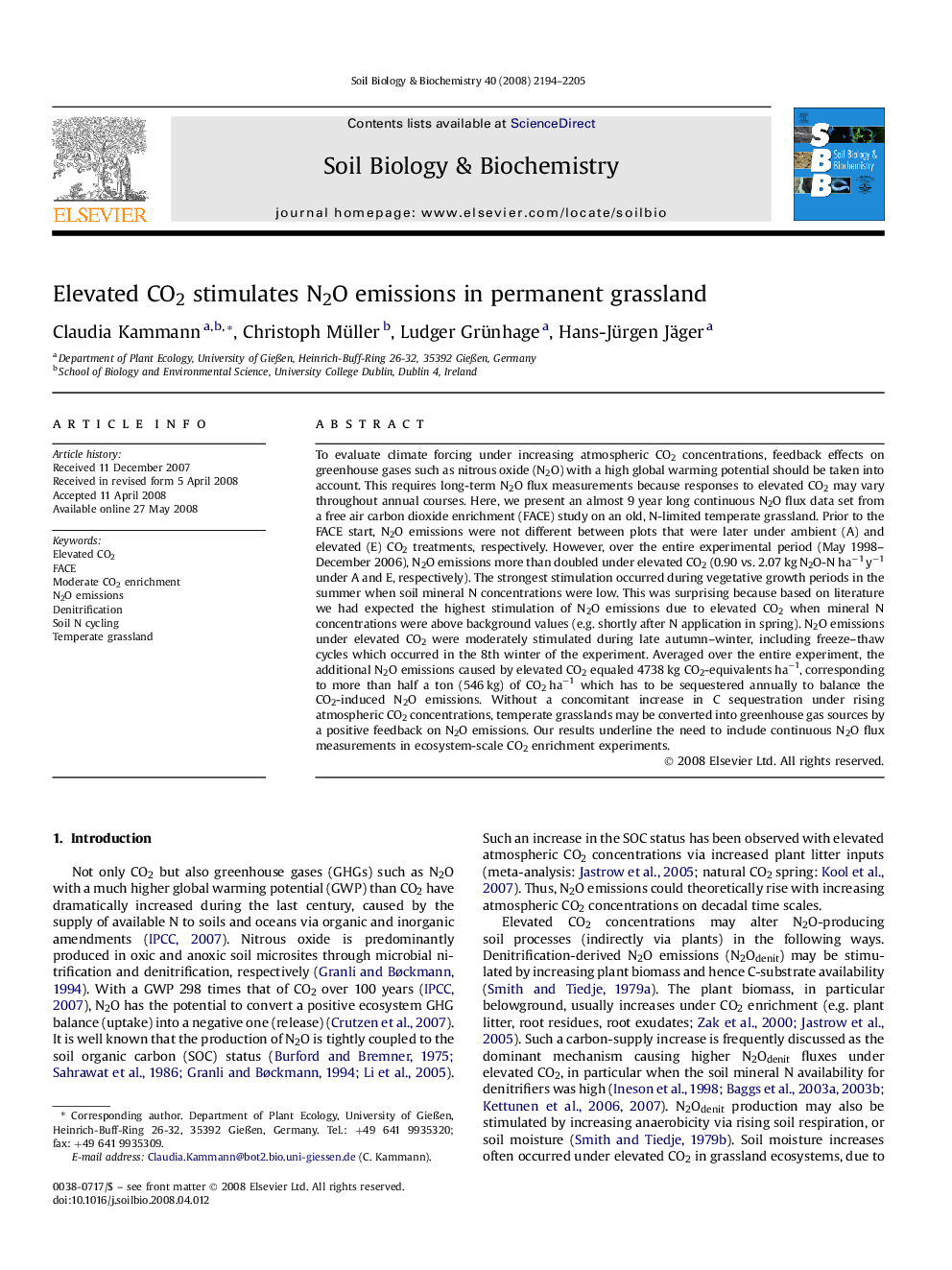| Article ID | Journal | Published Year | Pages | File Type |
|---|---|---|---|---|
| 2026879 | Soil Biology and Biochemistry | 2008 | 12 Pages |
To evaluate climate forcing under increasing atmospheric CO2 concentrations, feedback effects on greenhouse gases such as nitrous oxide (N2O) with a high global warming potential should be taken into account. This requires long-term N2O flux measurements because responses to elevated CO2 may vary throughout annual courses. Here, we present an almost 9 year long continuous N2O flux data set from a free air carbon dioxide enrichment (FACE) study on an old, N-limited temperate grassland. Prior to the FACE start, N2O emissions were not different between plots that were later under ambient (A) and elevated (E) CO2 treatments, respectively. However, over the entire experimental period (May 1998–December 2006), N2O emissions more than doubled under elevated CO2 (0.90 vs. 2.07 kg N2O-N ha−1 y−1 under A and E, respectively). The strongest stimulation occurred during vegetative growth periods in the summer when soil mineral N concentrations were low. This was surprising because based on literature we had expected the highest stimulation of N2O emissions due to elevated CO2 when mineral N concentrations were above background values (e.g. shortly after N application in spring). N2O emissions under elevated CO2 were moderately stimulated during late autumn–winter, including freeze–thaw cycles which occurred in the 8th winter of the experiment. Averaged over the entire experiment, the additional N2O emissions caused by elevated CO2 equaled 4738 kg CO2-equivalents ha−1, corresponding to more than half a ton (546 kg) of CO2 ha−1 which has to be sequestered annually to balance the CO2-induced N2O emissions. Without a concomitant increase in C sequestration under rising atmospheric CO2 concentrations, temperate grasslands may be converted into greenhouse gas sources by a positive feedback on N2O emissions. Our results underline the need to include continuous N2O flux measurements in ecosystem-scale CO2 enrichment experiments.
